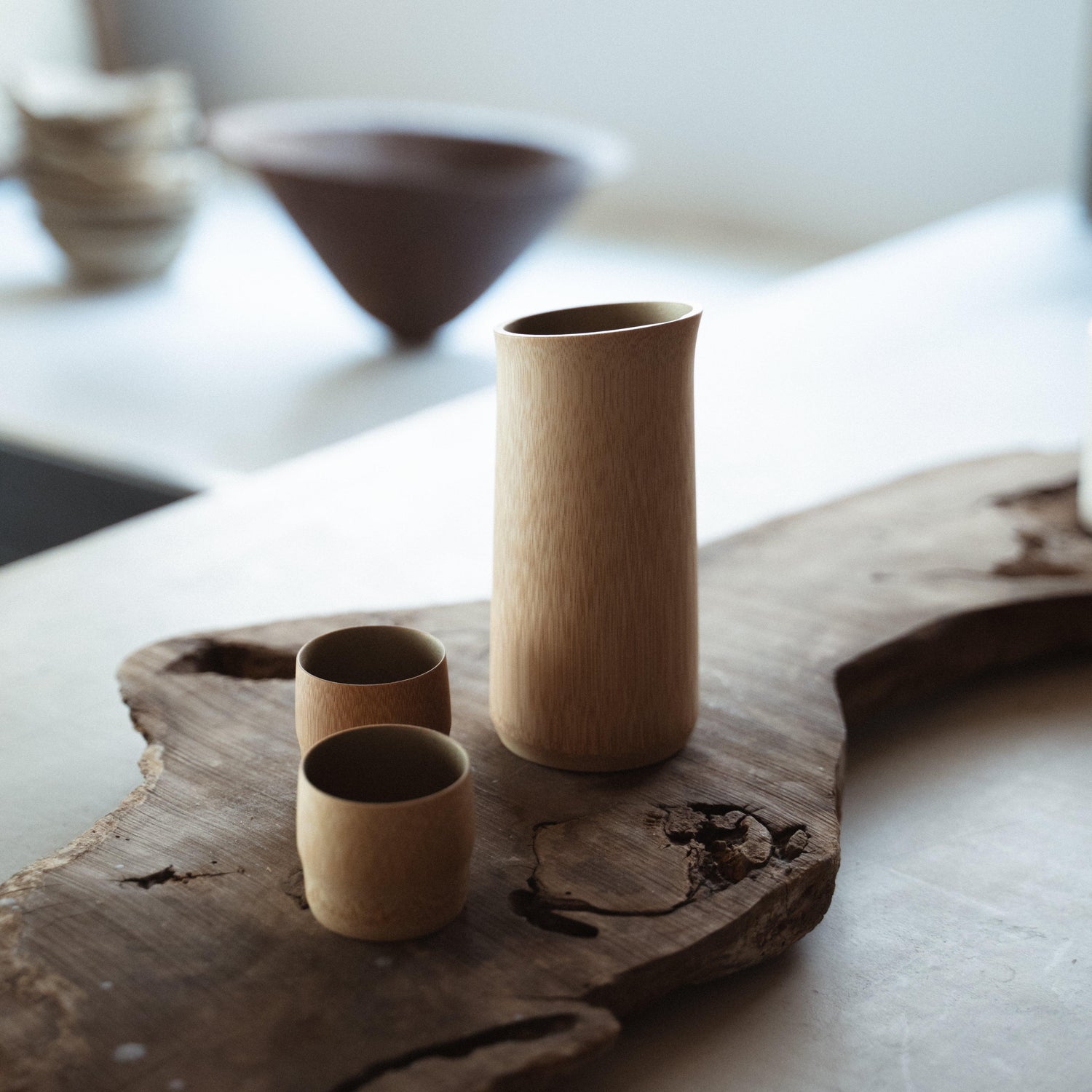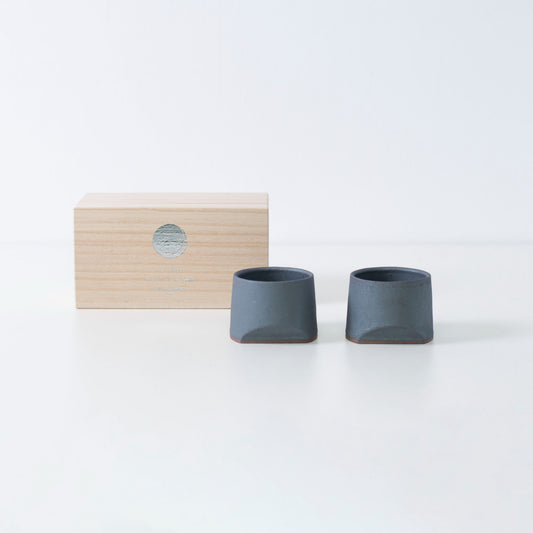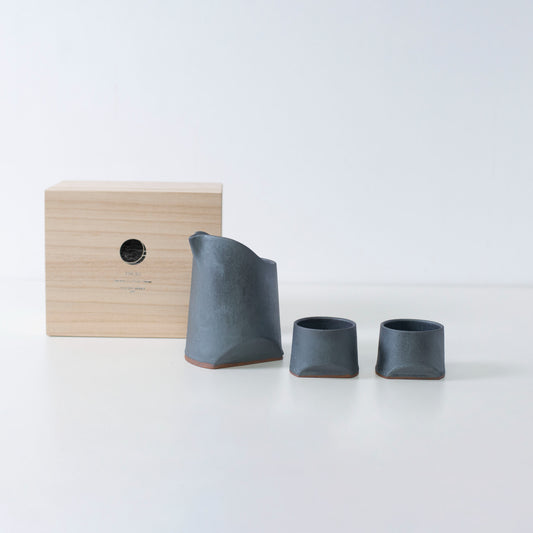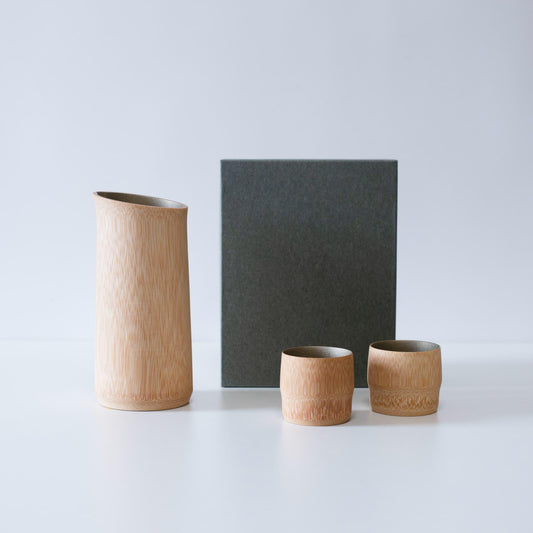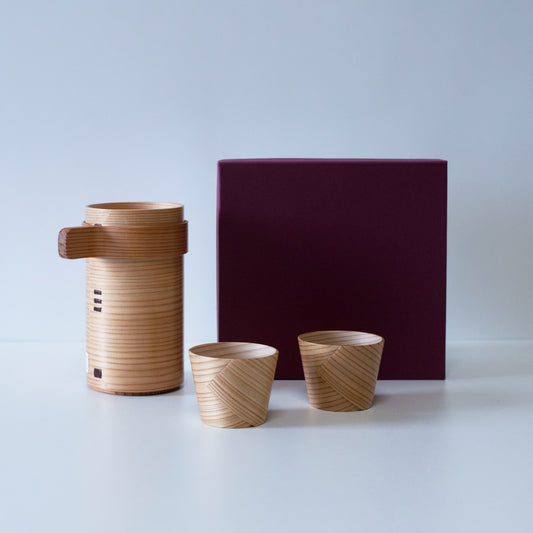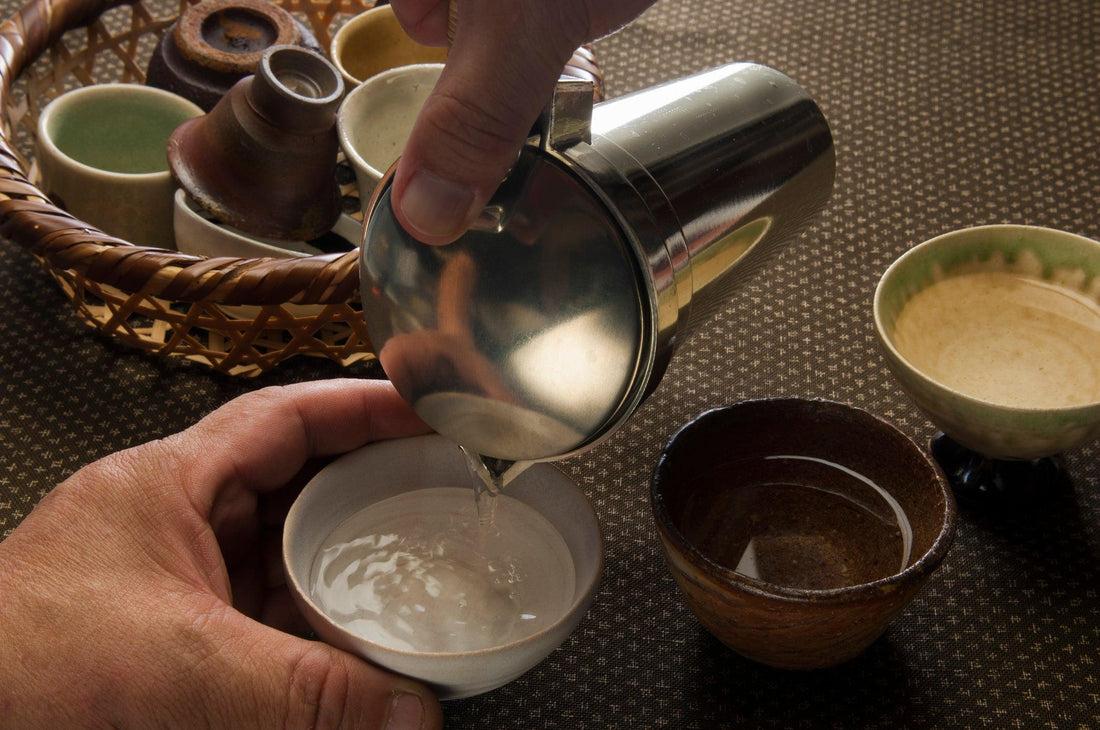
Sake Cups & Ware: Enhance Your Sake Experience
Share
Sake, known for its delicate aroma and taste, is a traditional Japanese brewed alcohol. To fully enjoy this exquisite beverage, selecting the appropriate sake ware is essential. The shape, material, and size of sake vessels play a crucial role in enhancing the aroma and flavor of sake. This article introduces the types and selection criteria of sake ware to deepen your sake experience. From traditional cups to modern glasses, explore the charm of sake to the fullest through various vessels.
Table of contents
Japanese Sake Sets: Cups, Carafes & More

The choice of sake ware plays a significant role in enjoying sake. Let's start with the basic types of vessels for drinking sake.
Sake Cups: Ochoko, Guinomi & Sakazuki
- Sakazuki: The most traditional type of sake cup, resembling a semi-circular plate. Its large surface area exposes the sake to air, deepening its flavor.
- Ochoko: Often used in combination with a tokkuri, it's suitable for casual gatherings with family and friends.
- Guinomi: Larger than ochoko and sakazuki, it's ideal for savoring sake slowly on your own.
- Glass: Suitable for cold sake or particularly aromatic sake. Like guinomi, its wide mouth allows for the enjoyment of complex aromas.
- Masu: Originally used for measuring sake, drinking directly from a masu or placing a glass inside it has become a popular way to enjoy sake.
Sake Carafes: Tokkuri & More
- Tokkuri: The most common type, suitable for both cold and warm sake. It is often used with an ochoko.
- Katakuchi: Used in more formal settings to pour cold sake, it features a spout on one side. Its larger spout allows for the enjoyment of the aroma.
- Chirori: A metal sake carafe used for making warm sake, with popular materials including easy-to-heat tin.
How to Choose a Sake Set

When selecting sake ware, consider the material and size as follows:
By Material
- Ceramic: Low thermal conductivity, keeps warm sake warm for longer.
- Porcelain: Thin and smooth, suitable for both cold and warm sake.
- Lacquerware: High insulation, keeps cold sake cold and warm sake warm.
- Tin: Believed to mellow the taste of sake, suitable for hot sake.
- Glass: Transparent and visually appealing, suitable for cold sake.
- Wood: Offers a natural aroma, but may not be suitable for enjoying the original aroma of sake.
By Size
- Ochoko: Small, suitable for a sip at a time, ideal for hot sake or cold sake.
- Guinomi: Slightly larger, suitable for enjoying the aroma.
By Mouth Shape
Different shapes such as bowl-shaped, trumpet-shaped, bud-shaped, and straight affect how the aroma and flavor are perceived. The shape is as crucial as the material, with the size of the opening being key: a small opening allows for a crisp drink, while a wide opening provides a rich taste. For a light drink, choose a tall vessel; for savoring in small quantities, a wide-mouthed one is better. Changing vessels during drinking can also be interesting, starting with a wide-mouthed vessel for the aromatic first drink, then switching to a smaller, straight type for a crisp taste, allowing for a varied and enjoyable sake experience.
Best Sake Sets for Ginjo, Junmai & More
Selecting sake ware according to the type of sake—such as fragrant, refreshing, rich, or matured—can enhance your enjoyment. Here's a brief classification to guide your choice:
- Junmai Daiginjo (Fragrant, rice polishing ratio below 50%): Fruity and aromatic with a refined taste and long aftertaste. Best served chilled.
- Junmai Ginjo (Fragrant, leaning towards rich, rice polishing ratio below 60%): Characterized by the umami of rice and a smooth, refined taste.
- Tokubetsu Junmai (Rich, rice polishing ratio below 60%): Rich umami and complex taste.
- Junmai (Rich, no specific rice polishing ratio): No specific polishing ratio, allowing for a full appreciation of rice's umami.
- Daiginjo (Fragrant, rice polishing ratio below 50%, honjozo category): Fruity and aromatic with a refined taste. Best served chilled.
- Ginjo (Fragrant, leaning towards refreshing, rice polishing ratio below 60%, honjozo category): Aromatic, clear, and delicate taste.
- Tokubetsu Honjozo (Refreshing, rice polishing ratio below 60%, honjozo category): Lighter and crisper than regular honjozo.
- Honjozo (Refreshing, rice polishing ratio below 70%, honjozo category): Smooth and clear taste.
In conclusion, the sake ware you choose significantly influences your enjoyment of sake. By using different materials, shapes, and sizes of vessels, you can further enhance the rich aromas and flavors of sake. Use this article as a guide to find the perfect sake ware for you and explore the world of sake more deeply and richly. Savor the depth of sake culture through your choice of ware, and discover new pleasures and insights awaiting you.

